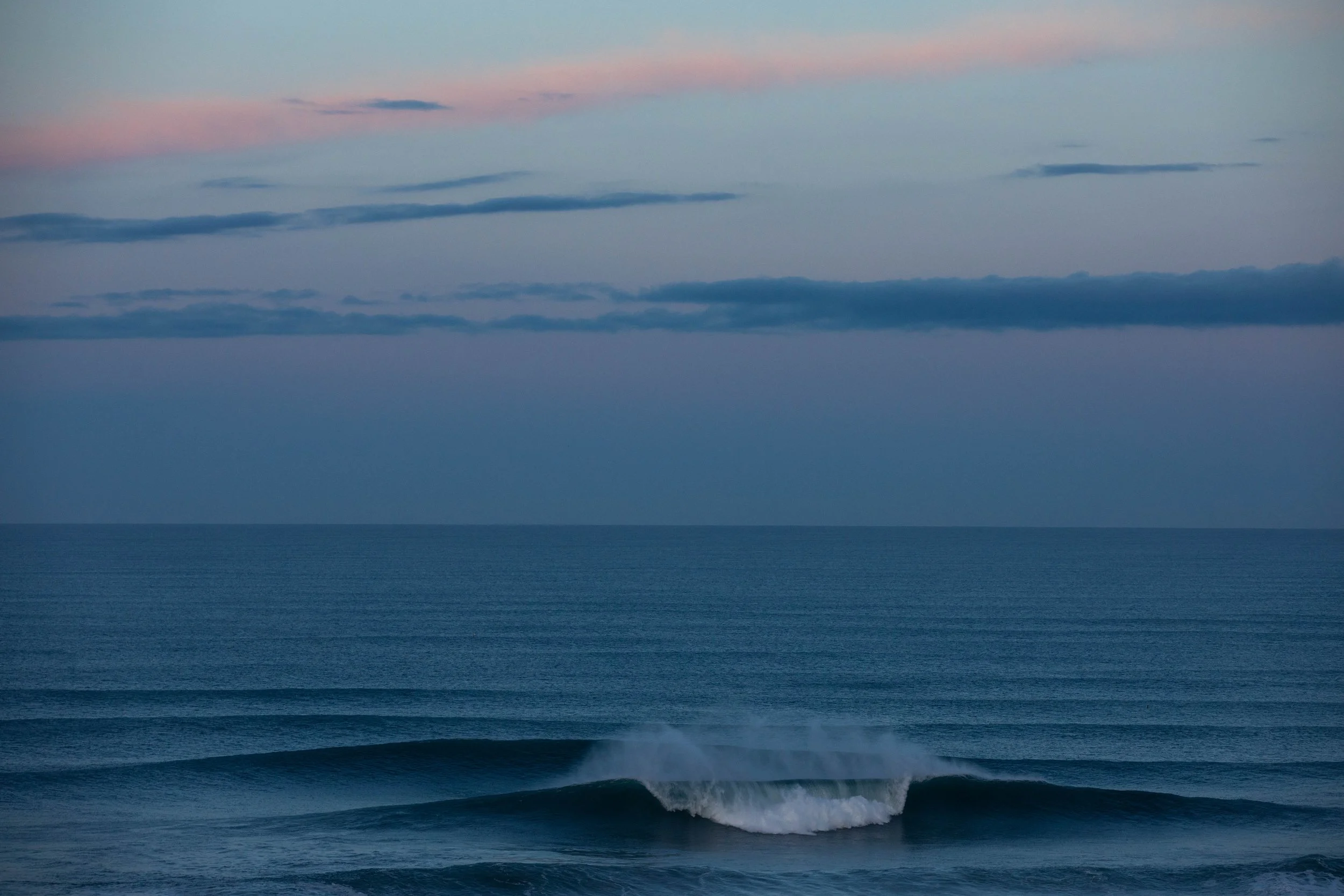It’s late November but you wouldn’t know it by the way the hot sun shines on the swarms of people descending the cliffs of Praia do Norte. Despite an unrealistically strict confinement, nothing seems to draw out the rule breakers like a little sunshine and picture-perfect waves barreling through a 12th century fishing village.
There are certain times where certain places are just the ones to be. Today, it’s Nazaré.
November summer. That’s what I’m told this magical week of summer temperatures coinciding with winter swell is affectionately named. A slice of seasonal heaven, reminding us all why Portugal’s coastline will always have its place in the high court of global destinations.
After two months here having moved from Los Angeles, I’ve realized a village like this can get lonely after a while. I’m not used to seeing the same handful of people every day, multiple times a day, so the influx of new faces from Lisbon, Ericeira, Porto, Basque Country, Galicia and beyond, feels exotic—even overwhelming. We’re here to drink water from the same well: the stretch of coastline known best for its ferocious big waves, less for its truly perfect double-overhead days where this beach break resembles a love child between Hossegor and Pipeline.
And here I am, an American girl in the middle of a group of Portugal’s best body boarders. Tó Cardoso borrows my sunscreen and eats my croissant without asking. Antonio Saraiva is locked and loaded and ready to film the day’s triumph and carnage. Steph Kokorelis, Tristan Roberts, Maxime Castillo, Miguel Coelho, Simão Monteiro, Hugo Maduro, Luís Ben de Sá, and Gui Gerra represent this gaggle of guys. How I got here I don’t remember. Why I’m here matters even less. The sun is shining, the waves are firing, and the show is about to start.
Despite the plethora of cameras pointed at surfing’s top big wave pros who’ve jetted in from the far flung corners of the world (cue Justine Dupont, Lucas Chumbo, Grant “Twiggy” Baker—to name a few), I find it hard to watch anyone navigate the shifty, unpredictable peaks as gracefully and effortlessly as the body boarders. Their little black dots move in the lineup according to the ocean’s subtle shifts, and, unlike the surfers, the bodyboarders look like an amoeba, a unicellular organism, flowing with nature’s rhythm to maximize their collective wave count.
They sit farthest out in the channel, cheering each other on as the next one drops in at the steepest part of the peak, disappears in the depths of the tube, and ejects like a rocket off the lip. There’s a secret in the bowels of the barrel they’re not letting the rest of us in on—this I’m sure of. As far as the lineup goes, the body boarders prove a tough crowd to beat.
I’m embarrassed to say that all I knew about body boarding before was a handful of carnage clips of late drops and subsequent obliteration at the Wedge in Newport, California. After all, the West Coast crowns surfing as the be-all-end-all of ocean sports, but, as I’ve come to learn in the Atlantic, while surfing is certainly still the crown jewel, indisputably, the performance level of body boarders in the water—be it here in Nazaré, the skate park water ramps of Lisbon, or the reef breaks around Ericeira—frequently surpasses that of surfing’s most globally traveled pros. As a newbie I can’t help but wonder, why?
In the case of Nazaré specifically, body boarding is accessible. Not only financially ($150-200 USD vs $700-1,000+ for a surfboard), but materially, it’s a lot easier to maintain or replace a body board than accumulating a quiver of short boards and guns, fins and leashes and numerous accessories necessary to accommodate this wave.
Not only that, but Nazaré isn’t exactly a great beginner spot. Body boarding on Praia do Norte or Praia da Nazaré enables smoother access to the supersonic spitting barrels without the added stakes of popping up.
Body boarding is also an heirloom passed from generation to generation. It earns a special place in the cultural heart strings of a country like Portugal and of a village like Nazaré. Not as popularized by media or lucrative of an athletic career path, “boog” attracts the underground watermen and women (I’d be remiss to not mention local lady chargers like Teresa Almeida and Isabela Sousa) who pursue it, as Steph Kokorelis says, “for the true essence of the sport. You jump in the water and charge the heaviest and most challenging waves, you push your limits, and encourage those around you to do the same while having fun in extreme conditions.”
That’s it. That’s the word I’ve been missing after two months in adrenaline-pumping Nazaré: fun. The body boarders’ smiles stretch across their faces from the moment they suit up, throughout their whole session, and when they’re back on the beach, or at home reviewing the clips of the day and decompressing with various vices of choice.
There’s an unmissable simplicity and ease among them. An honest-to-goodness relationship with the ocean and with each other, which stands out in the crowd of famous surfers battling for wave priority, the next RedBull sponsorship, or Netflix special. I breathe a sigh of relief to finally soak up a kind of surf culture more familiar to me, a feeling of home so far from home.
November summer will come and go far too quickly for my taste. Nazaré will morph back to its terrifying sky-scraper form, and the body boarders will migrate to different nooks and crannies of this diverse coastline for more perfect rides and unforgettable sessions, whether someone is there to capture them or not. That is, after all, the fun of it, and why the Portuguese will continue to be at the forefront of bodyboarding. Their motivations aren’t in pursuit of hype or fame, but pure and heartfelt, unmistakable joy.
